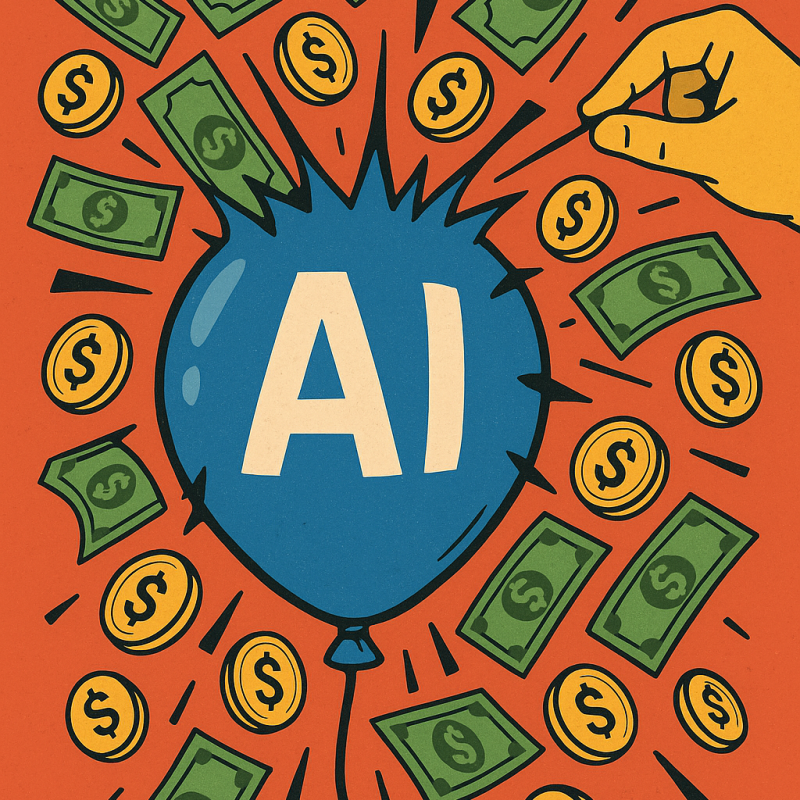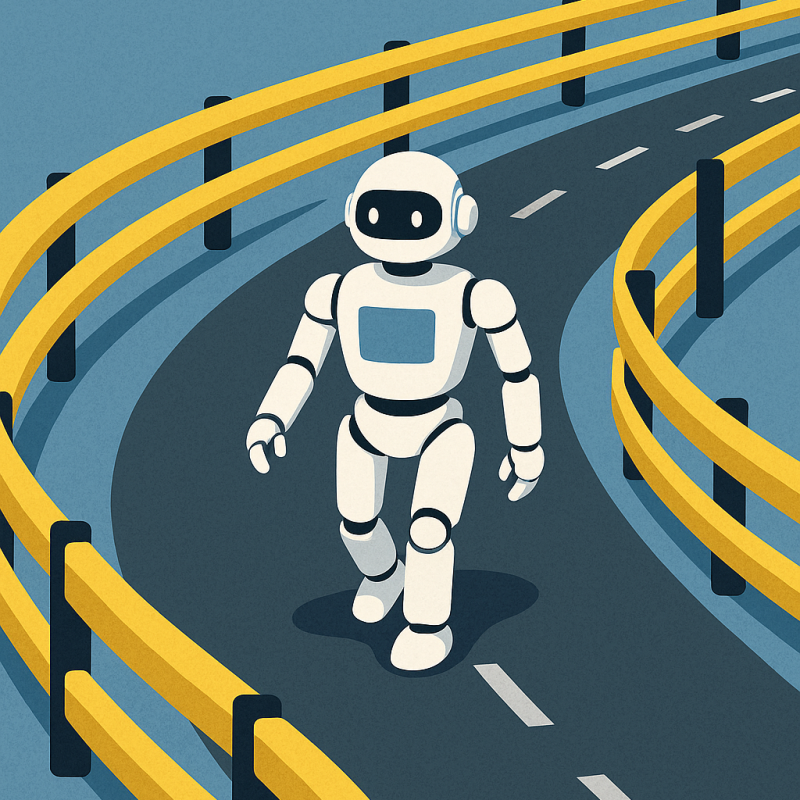

Prompts to OpenAI’s Sora:
create a visualization of financial investment in AI bursting open as a balloon
create a visual depicting guardrails guiding the movement of an AI robot
Tech Booms
Grandfather Michael, I enjoyed picturing you in a room with children screaming around, amidst bursting balloons, you still catching your breath after blowing them up. And then imagining you in your living room, guiding your grandchildren in learning to generate AI video using Sora, the latest upstart from OpenAI. It’s a big jump from waiting for bubbles to burst and drop away to grabbing onto them now, learning what surprises they contain. I admire how you push us to learn new things; alas, I am more skeptical, looking for hidden traps in shiny new tech. And just who is behind the ‘latest must-have’ and why.
‘So, I asked ChatGPT 4.1 what failing tech booms have in common. The answer: big investments in hype, over-promising, weak product-market fit, few real benefits, and the inability to solve existing problems[1]. A 2025 MIT study found 95% of corporate AI projects showed no measurable profit or benefit. Yet, others insist the AI bubble is real and will not burst like other tech innovations, pointing only to the demise of the hasty bandwagon jumpers who lacked a plan to “solve real problems”. So, at this time, Grandfather Michael, let’s agree that we live in a dynamic and evolving world of AI, one that will see the collapse of dreamers while the pragmatists work out the details. My questions, however, amidst this flurry are: who is driving these developments; why, and, more importantly, who benefits?
Guardrails
The companies making AI innovations tell us it’s safe, while regulators play catch-up, adding more “guard rails, Yet, they play a game of whack-a-mole as new technologies pop up regularly. New tools appear faster than laws do, so we end up trusting for-profit firms to keep us safe — that’s like leaving a toddler alone near a cliff. Are we letting the monkeys run the zoo? Who’s the responsible adult?
Responsibility
Grandfather Michael, not to put a damper on the fun and fulfillment you had exploring Sora with your grandchildren, but I worry about responsibility. I worry about how to put responsibility in front of curiosity, play, and all the new “toys” (tech innovations) we have before us. Did you read how Sora is being used to create videos of deceased persons for fun, promotion, or political gain – causing real harm to families? Yet, we also see how, in the hands of the right person, the same tool can be used to memorialize a loved one. My point: don’t wait for policy or laws. Parents, educators, and creators need to lead. Start from the premise of responsible, respectful use: ask for consent, consider harm, and think about who benefits when you share or monetize someone’s image or story. We must start from the premise of ensuring the responsible and safe use of media, technology, and how we share it. There are many benefits, but let’s be sure to keep our eyes on the zoo. We are the adults in the room, as are all educators and parents, just like you were with your grandchildren.
[1] I checked the sources for legitimacy, settling on several plus others I found on my own.
